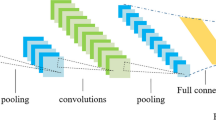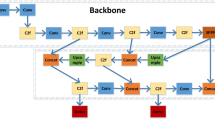Abstract
Segmenting the leaf images from the complex background is the current research topic. So, in this paper, we propose an algorithm to segment the leaf image from the natural background. Diverse methods exist in the literature, like region-based, edge-based, clustered-based, deformable models. Among these, deformable models are more advantageous, which leads to the use of the method for leaf segmentation. There are two types of deformable models, namely geometric and parametric models. The geometric model has many advantages over the parametric model; hence, we present the comparative study of the proposed model and other well-known algorithms. The proposed method combines the chan vese method with the level set method without re-initialization. It also uses bilateral filtering to remove the noise from the image for more vital image information, which helps in the fast evolution process. The main objective of the method is to segment a leaf from natural background. For our study, the model used the cotton leaf database with nearly 300 images. The results show that the proposed model modified chan vese method gives better results than other state-of-the-art performance parameters. The proposed method parameters Precision, Recall, Sensitivity, Specificity, Accuracy., Jaccard Index, F1 score values are 0.9685, 0.9949, 0.9949, 0.9817, 0.8897,0.9388 respectively.











Similar content being viewed by others
References
Agrawal P, Ojha G, Bhattacharya M (2016) A generic algorithm for segmenting a specified region of interest based on Chanvese’s algorithm and active contours. In: Dash S, Bhaskar M, Panigrahi B, Das S (eds) Artificial intelligence and evolutionary computations in engineering systems. Advances in intelligent systems and computing, vol 394. Springer, New Delhi
Bell J, Dee HM (2019) Leaf segmentation through the classification of edges. arXiv preprint arXiv:1904.03124
Caselles V, Catte F, Coll T, Dibos F (1993) A geometric model for active contours in image processing. Numer Math 66:1–31
Cerutti, G., Tougne, L., Mille, J., Vacavant, A., Coquin, D.(2011) Guiding active contours for tree leaf segmentation and identification. Amsterdam, Netherlands. Cross-Language Evaluation Forum
Chan T, Vese L (1999, September) An active contour model without edges”, In International Conference on Scale-Space Theories in Computer Vision. Springer, Berlin, Heidelberg. pp. 141–151
De Vylder, J et al (2011) Leaf segmentation and tracking using probabilistic parametric active contours. International Conference on Computer Vision/Computer Graphics Collaboration Techniques and Applications. Springer, Berlin, Heidelberg
Deenan S, Janakiraman S, Nagachandrabose S (2020) Image segmentation algorithms for Banana leaf disease diagnosis. J Inst Eng India Ser C 101:807–820
Fang J, Liu H, Zhang L, Liu J, Liu H (2019) Active Contour Driven by Weighted Hybrid Signed Pressure Force for Image Segmentation. IEEE Access 7:97492–97504
Foulonneau A, Charbonnier P, Heitz F (2003) Geometric shape priors for region-based active contours. Proceedings 2003 International Conference on Image Processing (Cat. No. 03CH37429). Vol. 3. IEEE
Gao L, Lin X (2019) Fully automatic segmentation method for medicinal plant leaf images in complex background. Comput Electron Agric 164:104924
Grand-Brochier M (2013) Comparative study of segmentation methods for tree leaves extraction. Proceedings of the International Workshop on Video and Image Ground Truth in Computer Vision Applications
Huang X, Bai H, Li S 2014 Automatic aerial image segmentation using a modified Chan-Vese algorithm. 2014 9th IEEE conference on industrial electronics and applications, Hangzhou, China, pp. 1091–1094
Jamaludin S, Zainal N, Mimi Diyana W. Zaki W (2016) Iris recognition based on the modified Chan-Vese active contour. Jurnal Teknologi 78:10–13
Jia D et al (2021) Multi-layer segmentation framework for cell nuclei using improved GVF Snake model, Watershed, and ellipse fitting. Biomed Signal Processing Control 67:102516
Jifeng N, Chengke W, Shigang L, Shuqin Y (2007) NGVF: an improved external force field for active contour model. Pattern Recogn Lett 28(1):58–63
Kalaivani S, Shantharajah SP, Padma T (2020) Agricultural leaf blight disease segmentation using indices based histogram intensity segmentation approach. Multimed Tools Appl 79:9145–9159
Kass M, Witkin A, Terzopoulos D (1988) Snakes: active contour models. Int J Comput Vis 1(4):321–331
Kichenassamy S et al (1995) Gradient flows and geometric active contour models. Proceedings of IEEE International Conference on Computer Vision. IEEE
Kuo K, Itakura K, Hosoi F (2019) Leaf segmentation based on k-means algorithm to obtain leaf angle distribution using terrestrial LiDAR. Remote Sens 11(21):2536
Li B, Acton ST (2007) Active contour external force using vector field convolution for image segmentation. IEEE Trans Image Process 16(8):2096–2106
Li YF et al (2005) A leaf vein extraction method based on snakes technique. 2005 International Conference on Neural Networks and Brain. Vol. 2. IEEE
Li C, Xu C, Gui C, Fox MD (2005) Level set evolution without re-initialization: a new variational formulation. 2005 IEEE Computer Society Conference on Computer Vision and Pattern Recognition (CVPR'05), vol. 1, pp. 430–436
Zhang, M., & Gunturk, B. K. (2008), Multiresolution bilateral filtering for image denoising, IEEE Transactions on image processing, 17(12), 2324-2333
Liang G-S, Wang R-W, Wen X-B (2015) Image denoising based on bilateral filtering and non-local means. J Optoelectron Laser 26(11):2231–2235
Malladi R, Sethian JA, Vemuri BC (1995) Shape modelingwith front propagation: a level set approach. IEEE TransPatt Anal Mach Intell 17:158–175
Mandal D, Chatterjee A, Maitra M (2014) Improved Chan-Vese Image Segmentation Model Using Delta-Bar-Delta Algorithm. In: Kumar Kundu M, Mohapatra D, Konar A, Chakraborty A (eds) Advanced Computing, Networking and Informatics- Volume 1. Smart Innovation, Systems and Technologies, vol 27. Springer, Cham
Nesaratnam RJ, Bala Murugan C (2015) Identifying leaf in a natural image using morphological characters. 2015 international conference on innovations in information, embedded and communication systems (ICIIECS), Coimbatore, India, pp. 1–5, https://doi.org/10.1109/ICIIECS.2015.7193115
Niu C, Li H, Niu Y, Zhou Z, Bu Y, Zheng W (2016) Segmentation of Cotton Leaves Based on Improved Watershed Algorithm. In: Li D, Li Z (eds) Computer and Computing Technologies in Agriculture IX. CCTA 2015. IFIP advances in information and communication technology, vol 478. Springer, Cham
Paris S, Kornprobst P, Tumblin J, Durand F (2009) Bilateral filtering: Theory and applications. Now Publishers Inc.
Scharr H, Minervini M, French AP (2016) Leaf segmentation in plant phenotyping: a collation study. Mach Vis Appl 27:585–606
Shantkumari M, Uma SV (2021) Grape leaf segmentation for disease identification through adaptive Snake algorithm model. Multimed Tools Appl 80:8861–8879
Singh J, Kaur H (2018) Plant disease detection based on region-based segmentation and KNN classifier. International Conference on ISMAC in Computational Vision and Bio-Engineering. Springer, Cham
Singh V, Misra AK (2017) Detection of plant leaf diseases using image segmentation and soft computing techniques. Information processing in Agriculture 4(1):41–49
Srikham M (2012) Active contours segmentation with edge based and local region based. Proceedings of the 21st International Conference on Pattern Recognition (ICPR2012). IEEE
Sun G, Jia X, Geng T 2018 Plant diseases recognition based on image processing technology, Nankai University, College of Electronic Information and Optical Engineering, Tianjin 300350, China
Tian K, Li J, Zeng J, Evans A, Zhang L (2019) Segmentation of tomato leaf images based on adaptive clustering number of K-means algorithm. Comput Electron Agric 165:104962
Tiilikainen NP (2007) A comparative study of active contour snakes. Copenhagen University, Denmark, pp 21–26
Wang Z, Wang K, Yang F, Pan S, Han Y (2018) Image segmentation of overlapping leaves based on Chan–Vese model and Sobel operator. Inf Proc Agric 5(1):1–10
Wu Y, Jia Y, Wang Y (2010) Adaptive diffusion flow for parametric active contours. 2010 20th International Conference on Pattern Recognition. IEEE
Xu C, Prince JL (2006) Active contours, deformable models, and gradient vector flow. mar 7
Author information
Authors and Affiliations
Corresponding author
Additional information
Publisher’s note
Springer Nature remains neutral with regard to jurisdictional claims in published maps and institutional affiliations.
Rights and permissions
About this article
Cite this article
Patil, B.M., Burkpalli, V. Segmentation of cotton leaf images using a modified chan vese method. Multimed Tools Appl 81, 15419–15437 (2022). https://doi.org/10.1007/s11042-022-12436-8
Received:
Revised:
Accepted:
Published:
Issue Date:
DOI: https://doi.org/10.1007/s11042-022-12436-8




